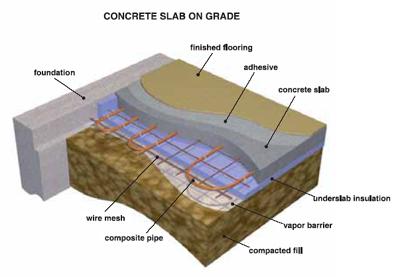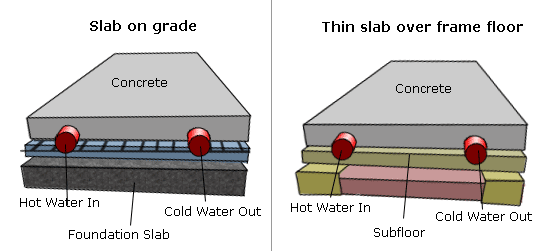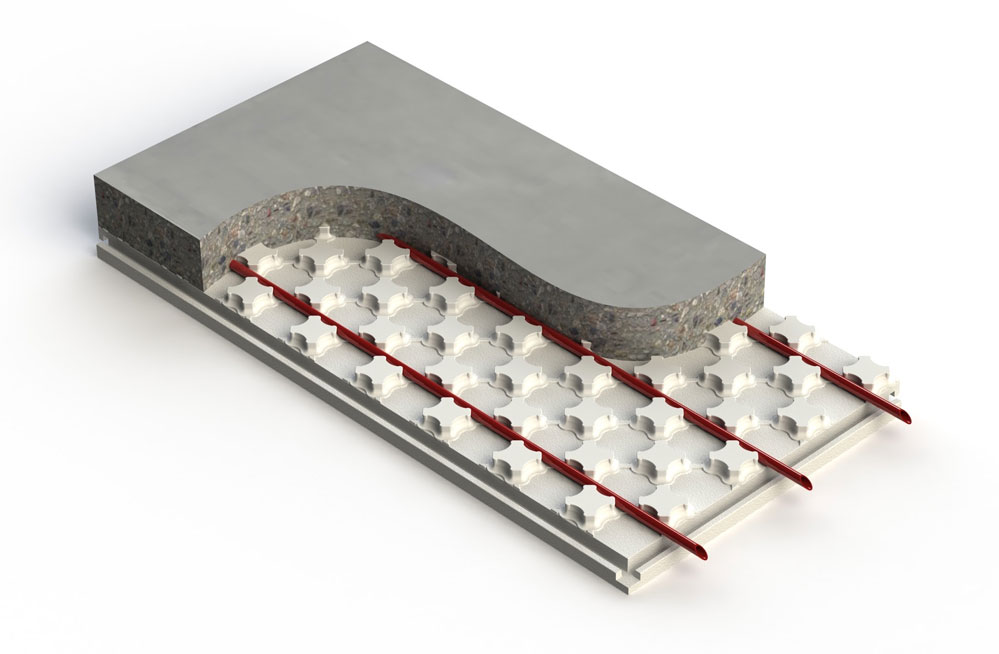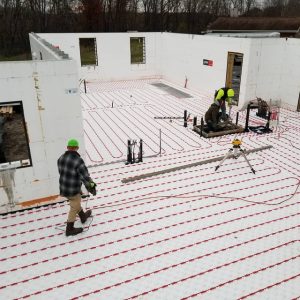Radiant floor heating systems. They are becoming a mainstay in homes today, but exactly what are they? This blog post will answer that very question as well as explain how they work and their many benefits.
 Radiant floor heating systems supply heat directly to the floor. There are two heating sources with radiant floor systems: water or electrical, and both of them are underneath the floor. In either case, they provide heat from the floor upward (with the water-based system, hot water circulates through pipes to create heat).
Radiant floor heating systems supply heat directly to the floor. There are two heating sources with radiant floor systems: water or electrical, and both of them are underneath the floor. In either case, they provide heat from the floor upward (with the water-based system, hot water circulates through pipes to create heat).
Radiant heated floors can also be concrete slabs (both basement or main floor slabs) or they can be above-grade floors, and they can be used in new construction as well as in renovations. Radiant floor systems work with all floor coverings too.
Here are some of the benefits of radiant floor heating systems:
- Energy-Efficient = Lower Energy Bills
Radiant floor heating systems are much more energy efficient. Traditional radiators must be heated to high temperatures in order to provide adequate warmth (roughly 65-75° C/150-170° F), while radiant floor heating systems can work at 29° C (84° F) or less. 
- Maximum Comfort
Radiant floor heating systems provide a higher level of comfort than radiators as well, particularly because they provide consistent warmth without any of the cold spots that are typical of radiators. And you won’t hear the noise of air blowing either with radiant floor heat, resulting in a much quieter home.
 Radiant floor heating is also better for allergy sufferers because it keeps the air very oxygen-rich, while also resulting in minimal air movement. With radiators, the high temperatures it produces reduce oxygen levels and cause dust to circulate because hot air is always rising and falling.
Radiant floor heating is also better for allergy sufferers because it keeps the air very oxygen-rich, while also resulting in minimal air movement. With radiators, the high temperatures it produces reduce oxygen levels and cause dust to circulate because hot air is always rising and falling.
- Easy Installation
Radiant floor heating systems are also easy to install. Tubes that circulate hot water or electrical heating elements get installed in the concrete slab when it’s poured and then get connected to a boiler. For existing concrete floors, retrofitting can occur over the current slab without raising the height of the floor by very much at all.
The process of installation a radiant heated floor can be simplified even further. Logix Brand’s radiant floor panels (called “Heat-Sheet®”), for instance, have tough nodules on the panels that allow you to simply “walk the heating tubes into place” for simple, headache-free installation. These nodules also hold the tubes in place without ties or staples, just as you can see below:

These tough panels also reduce job site breakage, while the low-profile nodules minimize the amount of concrete required, which can save you up to 20% of the concrete costs when compared to similar panel systems.
- Safe
Since the heating system is kept underneath the floor, with radiant floor systems you don’t have to worry about sharp or hot edges like you do with traditional radiators.
Wrapping It Up
Radiant floor heating systems are becoming increasingly popular. They increase energy efficiency, reduce costs and increase comfort. For builders, a radiant floor heating system is an easy sell!
Radiant floor heating installed with Heat-Sheet® panels increases energy efficiency, while saving builders time and money. Talk to a Heat-Sheet® Advisor by contacting us today.






